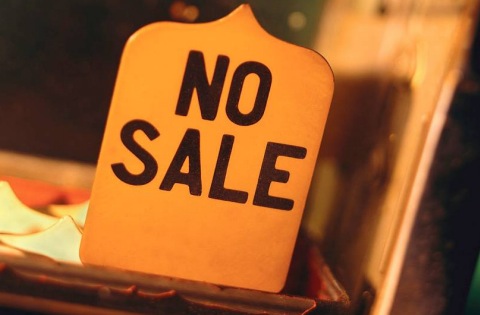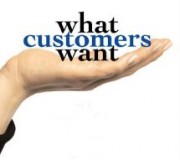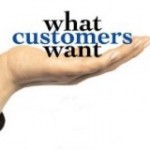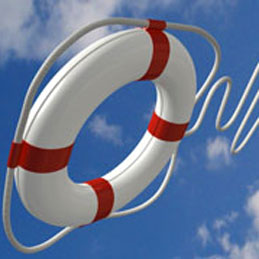01 Nov 2013
3 Signs You Are About To Lose The Sale
 Like most of you, I get cold calls and e-mails every day. 98% of it is spam – offers for things I have no interest in, or don’t need. Only 2% are even relevant to me or my business and unfortunately, most of those don’t get my attention either (so they inadvertently lose the sale).
Like most of you, I get cold calls and e-mails every day. 98% of it is spam – offers for things I have no interest in, or don’t need. Only 2% are even relevant to me or my business and unfortunately, most of those don’t get my attention either (so they inadvertently lose the sale).
Truth be told, I almost never answer or respond and I’m sure you feel the exact same way. It’s not because I have it in for salespeople – although most of us will admit we cringe at the hard sell tactics of the stereotypical salesperson. It’s because the vast majority of salespeople completely blow their initial approach and fail to capture my interest.
Now I appreciate and respect the fact that these people are just trying to do their jobs and make a living. Selling is not a crime. In fact, we are ALL in the business of selling something – a product, a service, an idea, a lifestyle, a belief, or a cause. So, like you, I’m not insensitive to the plight of the honest, hardworking sales professional.
The problem is this – most of their hard work (and yours) often goes to waste when they lose the sale for reasons that are preventable. They end up turning me off their product or whatever it is they’re selling because I am either bored, confused or overwhelmed by the pitch. And this usually shows up in one of three classic responses that I give, which I’m sure you have heard (or given) before. These are telltale cues that they (or you) are about to lose the sale:
- This isn’t a good time for me,
- I need to think about it, or
- Leave it with me and I will go over it later.
Fortunately, the mistakes that produced these 3 classic responses are completely avoidable – mistakes that you don’t have to make (and lose the sale) once you discover how the brain of your prospect hears your message and what you need to do to help him make a decision quickly.
The first and most important step in creating a sales or marketing message that closes more business is to become an expert at capturing attention up-front. If you are successful at quickly and strongly enchanting your prospect within the first 60 seconds, you stand a much greater chance of holding his interest until you can communicate your entire message.
Regardless of the length of your sales presentation or marketing message, you must capture attention and deliver your most powerful points up-front when your audience is most alert and receptive. Never begin by introducing your brand, building your credibility, talking about your competitors, or listing features and benefits. This strategy will put your customers to sleep (cause you to lose the sale) and you risk having to deliver your most important claims and proof when your customers are least likely to remember them.
In order to capture the attention of your audience and hold it, you have to know the one thing that is MOST important to them right now. This is something that you cannot afford to guess or assume. In order to make the greatest impact and charm the old brain of your customer, you need to do your homework up-front. You can’t afford the luxury of pitching five or six features/benefits and hope that one of them will appeal or hit the mark.
By taking the time upfront to help your prospect understand, acknowledge, and quantify his #1 source of pain, he will become clear about the true source and intensity of this problem, and you will reinforce (with his old brain) that it is safe to trust you and your proposed solution. Failing to do so, will inevitably lead to the undesired result of causing you to lose the sale and waste your valuable time and money in the process.
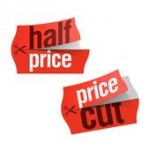 What would it be worth to you if never had to worry again about competing based on price alone?
What would it be worth to you if never had to worry again about competing based on price alone?
If your customers keep asking you for a better price, I am going to show you how to get the price that you deserve and close more sales.
We now know there are 3 distinct parts of the brain and each one of them has a different function. However, only 1 of them is responsible for decision making and it fires up around 8 seconds before you are consciously aware that you have even made a decision. The research and information I am about to share with you hasn’t come from psychology, the personal development industry or even a marketing agency – these findings were made by neuroscientists studying brain wave activity with fMRI, EEG and retinal tracking devices. They were looking to find out which part of your brain lights up when it is presented with different stimuli and the findings have been documented and published in respected publications like the Wall Street Journal and the Harvard Medical Journal.
The biggest part of the brain is the neo cortex. We are the only species on the planet that has developed this part of the brain. It is the last thing that forms in the womb and it lights up when we listen to music, look at colours, speak, read and process numbers. If you ever hear people talking about right vs. left brain thinking, they are talking about the neo cortex. In a nutshell – IT THINKS.
Similarly, when your customer says “I need to think about it” or “is this the best price I can get?” this part of the brain is firing up and looking for data. This uses up tons of your brain energy and prolongs the decision making process. If you want to drag out the process of getting your customer to decide or compete on price, you want to make sure that your customer has to us this part of his brain. Make sure you give your customer lots of BIG words, numbers, graphs, lists of features and benefits, talk about your competitors and how you stack up next to them – and your customer will NOT decide BUT he will do a whole lot of thinking and take up more of your valuable time and energy in the process.
Let’s move on to the middle or mammalian brain – this is the part of the brain that we share will every warm blooded creature on the planet. This is where you process emotions and feel. But this is not where you make decisions.
At the top of your spinal cord, there is a collection of neurons – which are commonly referred to as the old or reptilian brain. This is the first part of your brain that is formed in the womb and it is the part that keeps you alive – all bodily functions that take place below the level of consciousness, are controlled by this part of your brain.
It is your fight or flight brain – and its sole responsibility is to ensure your safety and survival. It houses the amgydala – which is the chemical factory in your brain that regulates all bodily functions. And it is the part of the brain that lights up when you DECIDE.
It lights up even before you have conscious awareness that you have made a decision. Now, while it is very true that this is the most primitive part of your brain, the good news is that it is very predictable. By understanding how this part of your brain works, you will never again bore and overwhelm your customers AND you will never again be lured into the trap of competing based on price.
How will you do this? By understanding how this part of your customer’s brain works, you can help him to use the least amount of mental energy in processing your message which means that he will make quicker decisions. It is important to remember that unlike the neo-cortex up here (the thinking part of your brain), this part right of your brain is automatic – it does not think, it only DECIDES and ACTS. It is always at work scanning your environment looking for information of value to your survival.
So you might be wondering how does this apply to the price that you charge for your product/service?
Just for a moment, I want you to imagine that you are in the business of selling pizzas. Now, it doesn’t matter whether your business is called Pizza Hut, Dominos, Boston Pizza or Pizza World… you are basically selling an undifferentiated product and the market that you find yourself in looks price conscious, doesn’t it? The reason for that is simple – the consumer finds it hard to distinguish between your pizza and the next guy.
Now if you happen to BE the owners of a Chicago Deep dish pizza shop you might argue that your pizza is better because your crust is thicker and you provide more toppings and value. But in the eyes of the consumer, your pizza is still not really worth much more than the next guy’s pizza. You might be charging $20 and your competitor is charging $18.50. Why is that?
It’s because even though you think there is a difference, in the eyes of your customer, there isn’t. 95% of what you and the next guy offer are essentially the exact same thing. And as long as you keep operating in that zone with a marketing message that doesn’t stand out and stake a claim, you will continue to compete on prize because your customer is up in his neo-cortex trying to figure out which pizza is the best one to order.
So knowing this, what could you do differently? Well one company in 1973 identified a way to stand out and grab market share. It didn’t claim to have the best, the thickest or even the cheapest pizza, it just made you a promise that if you ordered from them, you would get it in 30 minutes or your pizza was free. It was the most successful campaign in the history of the industry – for good reason.
Think about it, when you order a pizza, what is the one question that you have in the back of your mind? I wonder when the pizza will get here?
Dominos answered that question for you. They stopped making you need to think about it and they triggered the part of your brain that decides and dials.
This is the power of Sales Seduction – understanding why your customer says YES and knowing what to say in order to close more sales. Can you see now how knowing this information can help you accelerate your sales process, close more sales, trigger decisions and allow you to charge a fair price for your product/service?
Great – so your homework today is to go back through one of your sales or marketing messages and identify all the ways that you are boring or overwhelming your prospects. The key to NOT competing on price ever again, lies in doing your homework to help you close more sales.
Is your business growth starting to plateau or stagnate?
It’s easy to sit back, take the foot off the accelerator and watch the sales roll in, especially if you’ve been satisfied with your recent performance. But keep in mind that if you slack off too much, your competitors will soon catch up and eventually put you out of business. At some point you may even find that you have stopped providing what your customers want.
Take a look around – businesses (and your competitors) are closing their doors due to the drop in consumer spending – which means MORE potential customers for businesses like YOU, that do survive. Today is the best time to take steps to revamp your marketing efforts and respond to the needs and the pain of your target market.
In these tough times, it’s going to take more than “thinking outside the box” and goodwill with existing customers to secure the survival of your business.
I want you to STOP right now and make a list of everything that you (and your competitors) do NOT do to make it easy for your prospects to buy from you. If you want to succeed over the long term, you will take a good hard look at both of these lists and find a way to do whatever it takes, for as long as it takes, to win your customers and keep them.
Granted, this is not an easy task. Most businesses will continue to do what they have always done – guess or assume what they think their customers need. However, no matter how challenging it is to ask the hard questions and re-engineer your strategy, I guarantee it will be a whole lot less painful and stressful than going under.
I had a married couple come to me once for advice and coaching – both the business they were in and their relationship were at the breaking point. The husband turned and said to me “I don’t understand it. I do everything humanly possible for my wife and she doesn’t appreciate me and I don’t think I can possibly do anything more to satisfy my customers – they are never happy and always want more. What can I possibly do?”
My answer to this age old dilemma applies to him, his marriage, and to you in your business right now. “Sounds like you are doing a lot. Too bad it’s everything BUT the very thing that your partner and customers need most.”
While this may sound harsh, I think you will agree that it is absolutely true. It does you no good to work harder doing everything…instead of focusing on the 1 thing that you customers actually need. Wouldn’t it be easier for you to work smarter, not harder, if you knew with absolute certainty what that 1 thing is?
How can you take the lesson from my client and apply it to your own business right now?
How could you go about figuring out what that 1 thing is?
I want you to do something really radical today and start asking both your prospects and existing customers what they need. You need to find out:
• What is the biggest challenge your prospects are facing in their business?
• When your customer thinks of the product or service you provide, what is THE most painful or difficult issue associated with acquiring it?
• What is the most important criteria to your purchaser when evaluating a company like you?
• What are some things that he/she thinks about or considers from a financial perspective when selecting that product/service or a vendor?
• What is the key strategic driver for you customer’s decision?
It doesn’t really matter what you have done up to this point or how hard you are working. There is no prize for volume or quantity. What counts is quality and relevance. You need to do determine what your customers want…and give it to them.
If you had to pick 1 thing – 1 strategy or change that you could implement in your business that would allow you thrive despite tough economic times, what would it be?
Let’s make a list of the top 5 things that I hear most business owners (like you) say when I ask them the same question…
- Spend money on marketing – attract new customers
- Have a sale
- Ask for referrals or help
- Tighten your belt – cut costs
- Do more networking
Now what do all of these have in common?
They all involve you doing more of the same thing that you have always done. None of these involve a radical shift in the way that you do business, do they? None of these involve you taking a step back and re-examining what you do and whether it’s actually working. And none of these involve you changing the way that you communicate what you do to your customers.
And that is precisely why none of them will work to recession proof your business.
So why is that important?
Because consumer sentiment and spending has changed dramatically in the past few years and those changes are being felt across every industry and by both big and small businesses. Everything you thought you knew about your customer and why she was buying from you has probably changed. And if you don’t take the time now to re-discover your prospect’s main source of pain – the reason why she needs your product or service – you risk losing more sales and more ground to your competition.
Now some of you are probably sitting there thinking “but MY industry is different. You may think that you’ve been hit especially hard and that everyone in your niche has lost sales. But that’s not the case for 99% of you. Even some of the most competitive and vulnerable industries have companies who have continued to perform well and who have even stole market share.
Just for a moment, I want you to cast your mind back to the first few months after the GFC. A lot of people lost their life savings during the stock market crash and many lost their jobs immediately after that. It was a horrific few months and few industries felt the wrath of the crash more so than the automotive sector. If you remember, new car sales dropped by almost 20% in a short period of time and stayed that way for almost a year. That’s a huge drop in an industry that is vital to the health of the national economy.
Now sales of new cars were down 20% for the industry. Despite the massive drop in sales, 1 manufacturer actually managed to gain market share and outperform all other companies in sales growth. Do you remember who that was and why?
Only 1 company stopped and took a good hard look at the pain their customers were in at the time. They didn’t do what all the others did – which was spend more money on newspaper ads, lay off salespeople and slash new car prices.
Only 1 company examined the change in the market, correctly diagnosed the pain of their prospects and came up with a solution. “If you lose your job and can’t make the payments, no problem – we will take it back free of charge”.
Do you remember who that was? That’s right Hyundai.
With one simple change to their focus and strategy they stole market share from every other manufacturer because they correctly identified the shift in their customer’s pain. They didn’t keep going on with the same old strategy and approach that clearly wasn’t working. Yes, there had been a major downturn and the whole industry was hit hard, but there were still lots of customers who wanted to buy a new car but were afraid to do so because they might lose their jobs.
So how can you apply this to your market right now? First and foremost, your customers are not thinking about you, your brand and your features and benefits – they are thinking about their own survival and whether or not you can cure their pain. If you are able to correctly diagnose the pain, you will trigger the part of their brain that makes decisions and you will stand apart from your competition. That’s the power of Sales Seduction.
Think about one of your customers right now and her pain? What do you need to do in order to get more clarity around that? What questions do you need to ask her about how it is affecting her financially, personally and strategically? To the extent you can diagnose her pain, get her to acknowledge it and put forward the solution that cures it, she will listen to anything that you have to say.
Take a look around you… businesses are closing their doors everyday – which means more potential customers for the businesses like you that DO survive. And in times like these, it’s going to take more than just doing more of what you have always done to recession proof your business. Uncertain times call for deliberate decisions and proven practices. In order to recession proof your business you need to shift your thinking around the way you do business and start providing THE solution to the #1 pain or challenge that your customers have. And if you need some diagnoistic questions and a step-by-step framework to help you do this…I highly recommend that you check out Chapter 8 of Sales Seduction.

